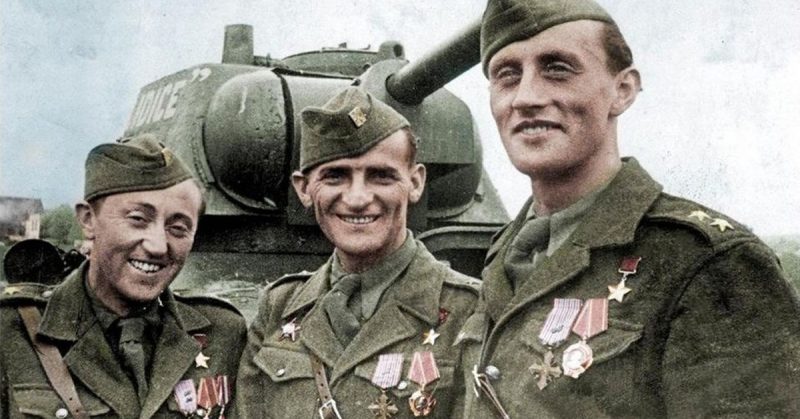The Czechoslovaks were put into action together with their Tank Battalion which included ten T-34/76 medium tanks, ten T-70 light tanks, and ten armored vehicles.
By the fall of 1943, the Red Army was able to liberate significant parts of the Soviet Union and push Axis forces to the Dnieper River where the Germans had built the famous Ostwall defensive line, also called the Panther–Wotan line.
Adolf Hitler and representatives of his army were confident that Allies coming from the east wouldn‘t be able to penetrate these defenses.
The Soviets succeeded in breaching the defensive line in several places, and they even cut off Crimea from the main Axis forces.
The next important battle would be fought over the city of Kiev, the capital of Ukraine, and Czechoslovaks would play an important role in it.

After having their baptism of fire in the Battle of Sokolovo, Battalion Svoboda grew to become the 1st Czechoslovak Independent Infantry Brigade in the Soviet Union. This was due to the influx of more and more Soviet citizens of Czechoslovak origin and Czechoslovaks (mostly Subcarpathian Rusyns) who were released from Soviet internment camps.
The Czechoslovaks proved themselves worthy in the Battle of Sokolovo. They became quite popular among the fighting Soviets, which led to stronger Soviet support for the Czechoslovak forces. As before, they wanted to fight Germans, and they wanted to do it somewhere that it mattered.
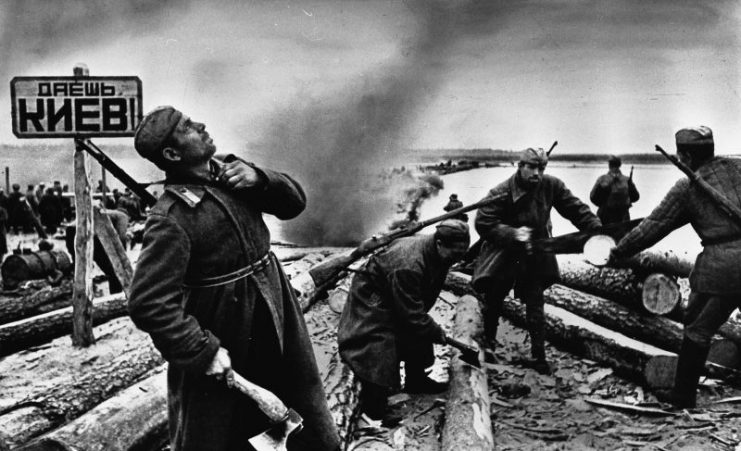
The Red Army crossed the Dnieper River south of Kiev under cover of smoke screens. They created the Bukryn bridgehead, but the Soviets had supply difficulties due to their destroyed railway network. The Germans were able to rush in reinforcements and contain this breach of the Ostwall.
Partisans operating in the rear were ordered to create hell in the area, which made it clear to the enemy that the Soviets wanted their Kiev back. The German army deployed 30 divisions in and around Kiev; seven of them were tank divisions, and two were motorized divisions.
The Germans were fighting an intense war with the Soviets from the first moment they invaded Soviet lands. The sheer brutality of everyday life under Nazi occupation would make contemporary people sick to their bones. In the Babi Yar ravine in Kiev alone, Nazis murdered 30.000 to 50,000 people.
Once again, Czechoslovaks on the move to the frontline had to witness the destruction and see the bodies of men, women, and children murdered by members of the “master race.”
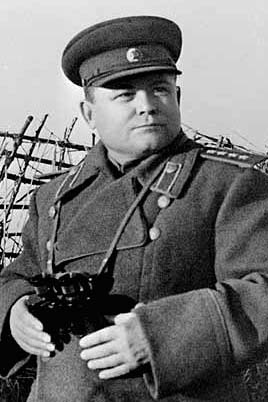
The first attempt to expand the bridgehead came in October 1943, but it was interrupted.
The 1st Ukrainian Front’s commander, Army General Nikolai Fyodorovich Vatutin, focussed on the Lyutezh bridgehead north of Kiev. Dummy tanks were built in the Bukryn bridgehead to fool the enemy. In addition, forces were moved to the Lyutezh bridgehead, including nearly 3,500 Czechoslovaks, the only foreign force that took part in the Battle.
Colonel Ludvík Svoboda, commander of the Czechoslovak Brigade, spoke for the whole unit when he demanded to be given the honor of assaulting the city as part of the first wave.
This was no craving for fame: the Czechoslovaks had been obliged to wait too long for another chance to fight their enemies. Svoboda wanted to ensure they would reach the center of the city they were attacking.
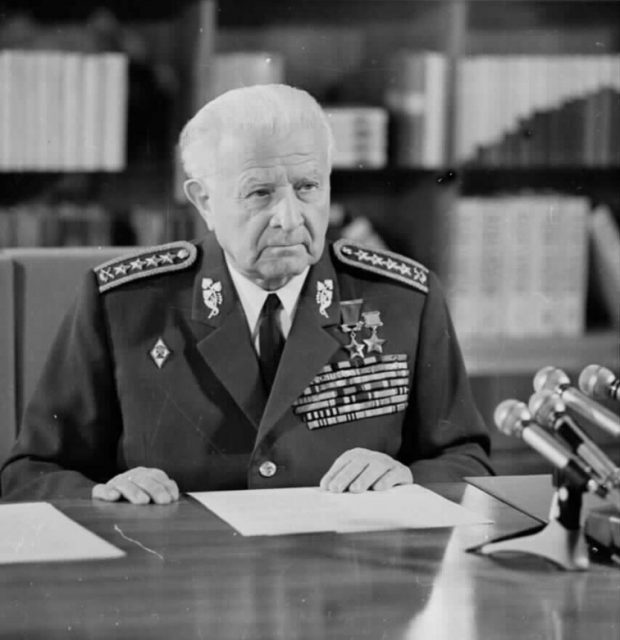
The Second Battle of Kiev (the First Battle of Kiev was fought in 1941) started on November 3, 1943, with a massive two-hour-long artillery barrage undertaken by over 2,000 howitzers and mortars, including Czechoslovak 122mm howitzers and over 500 Katyusha rocket launchers.
The effect was to create an inferno in the six-kilometer (almost four-mile) wide enemy lines. The Red Army was struggling in its advance, but they managed to expand the bridgehead.
On November 5, 1943, the Czechoslovaks were finally put into action together with their Tank Battalion which included ten T-34/76 medium tanks, ten T-70 light tanks, and ten armored vehicles.
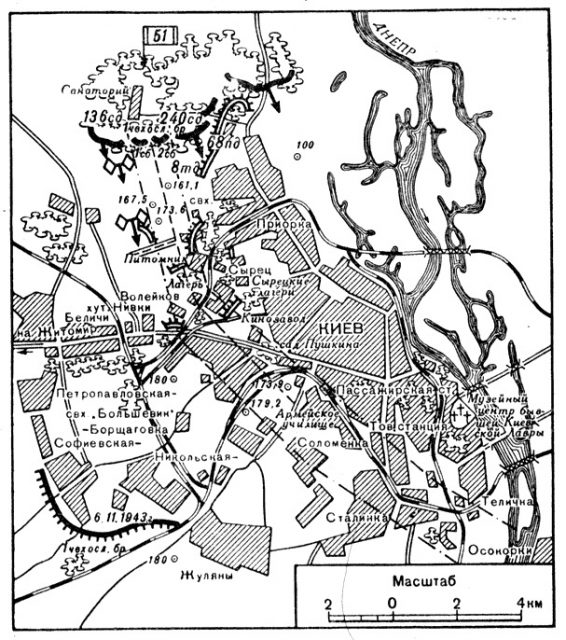
After liberating Vyshgorod, the Czechoslovaks were nearing the edges of the city of Kiev. Their goal was to advance through five checkpoints, annihilating enemies on their way, and liberate the Main Railway Station in Kiev.
While the Czechoslovaks were fighting their way into the center of Kiev, tanks of the Soviet Lieutenant General Pavel Semyonovich Rybalko were clearing areas west of the city. This unit was trying to meet up with other Red Army forces advancing from the south in the hope of cutting off those Germans who remained inside Kiev.
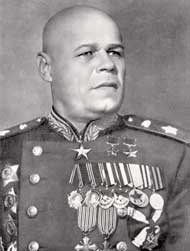
The most difficult task was to capture the Bolshevik Heavy Machinery Factory west of the city center. However, the Czechoslovaks not only succeeded in this, they even managed to save Soviet civilians who were held hostage by the Germans.
Fighting continued over the Kiev Film Studios, the Kiev Zoo, and the Main Railway Station. The sound of detonations could be heard all over the city because the Germans wanted to damage as many buildings as possible before leaving.
In the evening, the Czechoslovaks were holding the Main Railway Station, so the Soviets decided to utilize the success and continue with the attack throughout the night.
Rybalko’s tanks turned on their night lights and started their sirens. This shocked the enemy who was forced to retreat before the onslaught. When the Soviets reached the main road between Kiev and Zhytomyr, the Germans gave the order for remaining units to start leaving Kiev.
The Czechoslovaks were ordered to continue with their advance towards the Dnieper River. The Czechoslovak Brigade became the first unit that reached the Khreschatyk main street in Kiev. From there, they secured the Pechersk Lavra Monastery and reached the Dnieper River as the first unit fighting in the Battle of Kiev.
The Kiev Pechersk Lavra is an architectural masterpiece and one of the most important centers of the Eastern Orthodox Church.
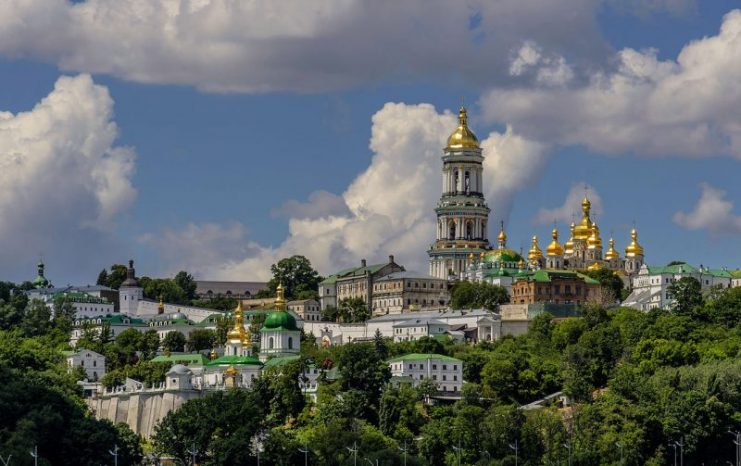
Kiev was liberated on the morning of November 6, 1943. Soviet civilians, who were in their cellars the whole time, started to emerge and were surprised to see soldiers in familiar uniforms who were speaking a strange but understandable language.
In total, 30 Czechoslovaks were killed in action, and 80 were wounded. However, they killed 630 enemies and took 11 captives. They also destroyed a Dornier Do 217 plane, four tanks, two Ferdinand self-propelled guns, seven vehicles with soldiers, four artillery batteries, 53 wooden bunkers, 41 heavy machine guns, and 24 light machine guns.
The Red Army managed to destroy 60% of the strength of 12 German divisions amounting to 186 enemy tanks, 38 self-propelled guns, and 78 planes. The Army also inflicted around 20,000 casualties on the enemy.
Never again would the city fall into fascist hands. The Germans had occupied the city for 778 days during which time they murdered nearly 200,000 people and sent 100,000 as forced labor to Germany. The free world cheered. London reported that an avalanche was falling on Nazi Germany.
Three Czechoslovaks were awarded the highest Soviet decoration, the Golden Star of the Hero of the Soviet Union. All three would face different but equally sad fates.
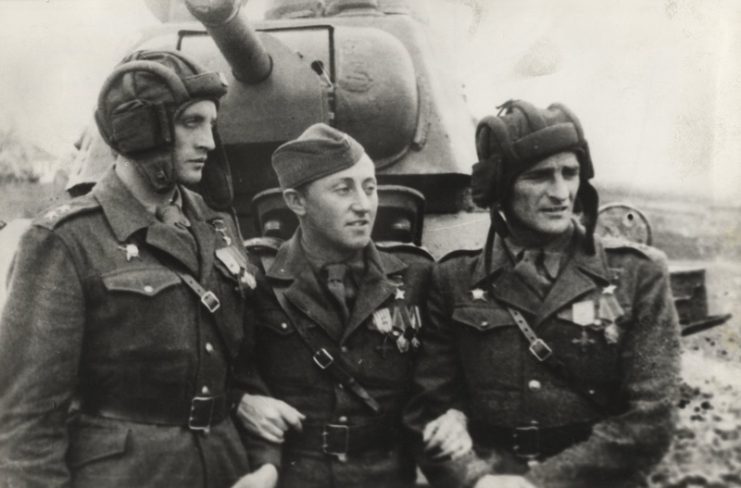
Antonín Sochor, commander of the Company of submachine gunners during the Battle of Kiev, commanded the Motorized Battalion of submachine gunners in the 1944 Battle of the Dukla Pass, which was the bloodiest battle in Czechoslovak military history.
A grenade exploded right next to Sochor while he was trying to take Hill 534, north-west of the Polish town of Dukla, which was nicknamed “Bloody Hill 534.” In all, 218 shrapnel pieces were taken out of his body, and he survived the war.
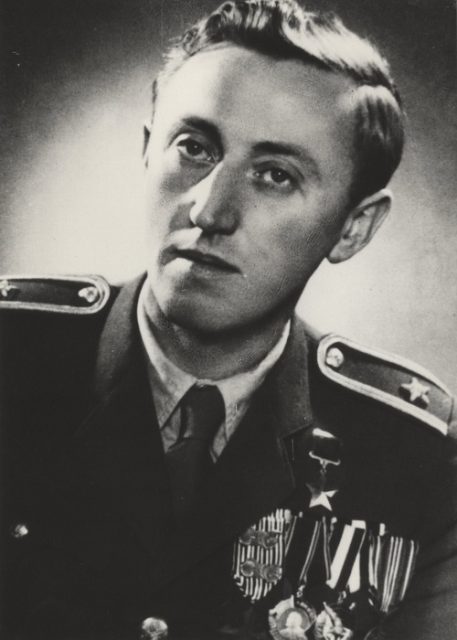
Lieutenant Colonel Antonín Sochor, Hero of the Soviet Union and holder of four Czechoslovak War Crosses 1939, died in 1950 under strange circumstances at a time when he was convinced that he was being followed.
While attending the largest Czechoslovak military maneuvers since the Second World War, his car was rammed by a truck full of soldiers, and he died the next day. The NKVD agent, Bedřich Reicin, organized his rescue. He also contacted a well-known neurosurgeon, but there was a significant intentional delay.
As a consequence, Czechoslovakia lost a great war hero who fitted perfectly with the saying “don’t judge a book by its cover” since he was only 164 centimeters (5.4 feet) tall, but he was a great soldier and commander.
Richard Tesařík, commander of the Company of T-70 light tanks during the Battle of Kiev, switched to T-34/76 medium tanks during the Battle of the Dukla Pass. While trying to capture Hill 694 Hyrowa Góra, his tank was hit by a Panzerfaust and shrapnel went into his eyes.
Doctors were able to save one eye by taking the shrapnel out with an electromagnet, but he lost his other eye. He was forced to wear an eyepatch for the rest of his life.
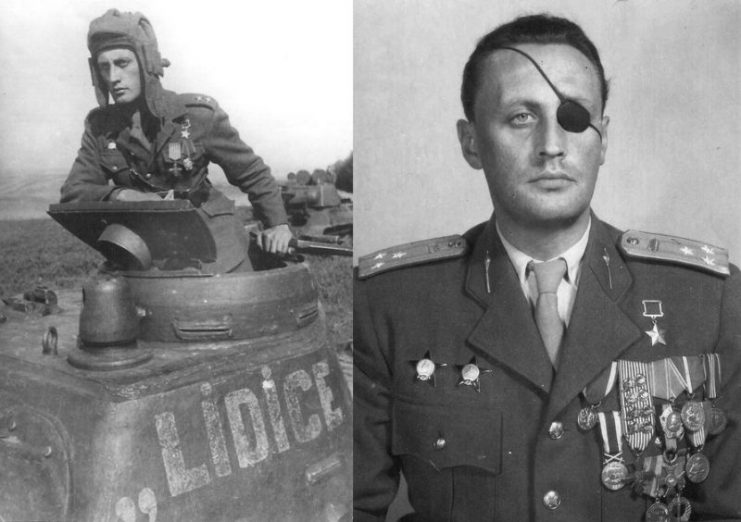
The communist regime in Czechoslovakia sought out all war heroes in the 1950s and Tesařík was no exception. He was arrested and put behind bars.
When the new leader of the Soviet Union, Nikita Sergeyevich Khrushchev, the man who shocked the world (and especially the Soviet Union) by criticizing Stalin’s rule, came for a visit to Czechoslovakia, he intentionally asked about the whereabouts of Czechoslovak Heroes of the Soviet Union.
Richard Tesařík was quickly released from prison on probation after spending nine months in jail. This marked him for life. Richard Tesařík, Hero of the Soviet Union and holder of five Czechoslovak War Crosses 1939, was thrown out of the army and had to survive on menial jobs till his death. He and his exploits were totally forgotten.
Josef Buršík, commander of the Company of T-34/76 medium tanks during the Battle of Kiev, continued liberating parts of Ukraine and Poland and took part in the Battle of the Dukla Pass.
His tank was hit when Czechoslovaks tried to storm the border line in the Carpathian Mountains, but he managed to survive. Buršík led his Tank Battalion equipped with T-34/85 medium tanks in one of the last major battles of World War 2 in Europe, the Battle of Ostrava, while showing great heroism before being wounded.
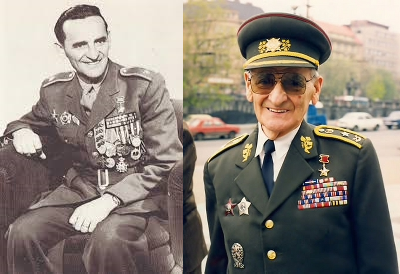
Josef Buršík, Hero of the Soviet Union and holder of five Czechoslovak War Crosses 1939, became a victim of the communist regime as well. He was arrested, jailed, and nearly died of tuberculosis because he was not receiving treatment.
Thanks to the actions of good people, he managed to escape and leave the country with his wife, although he was forced to leave his two daughters behind. Only then was he able to go through the necessary surgeries and get better.
His two daughters had to grow up without parents while being mocked by part of the public and persecuted by the communist regime.
Josef Buršík dedicated his life to the fight against communism. By writing articles and making radio appearances, he became the voice of freedom. For this, he was erased from history by the Czechoslovak communist regime.
No book, article, or photograph provided evidence that he fought in the Second World War. Only pictures not showing Buršík were used, or he was cut out of pictures. It was a harsh outcome given that he was a Hero of the Soviet Union, a close friend with other holders of this decoration, and that he commanded units with T-34 tanks, a symbol of the Eastern Front. With these tanks, he fought from Kiev to Prague, through true hell.
The communist regime finally stepped aside and sent his two daughters to London in 1963. Only then was the family reunited. The girls were able to meet their two younger sisters and their brother, who had been born in exile.
Josef Buršík marched in Winston Churchill’s mourning procession in 1965. In 1968, when the Soviet Union backstabbed Czechoslovakia, invaded the country, and started a long military occupation, Josef Buršík protested this betrayal in the streets of London. This became an annual tradition, and he also went to the Soviet Embassy to officially give back all his Soviet war decorations.
He was rehabilitated and reinstated to his rank only following the fall of communism after 1989.
Read another story from us: Slovak National Uprising
Vladimír Olej is the author of the novel The Corner of Death, which tells the story of a Slovak female medic who changed sides on the Eastern Front and took part in the Czechoslovak antifascist resistance. The book is filled with interesting historical data, and it tries to set things straight and tell the stories of Czechoslovak war heroes.
All photos provided by the author.
Correction.
In the original version of the article, we misstated “In the Babi Yar ravine in Kiev alone, Nazis murdered up to 200,000 people.” The correct number is “30.000 to 50.000 people”.
We made the correction on (03.04.2019).
